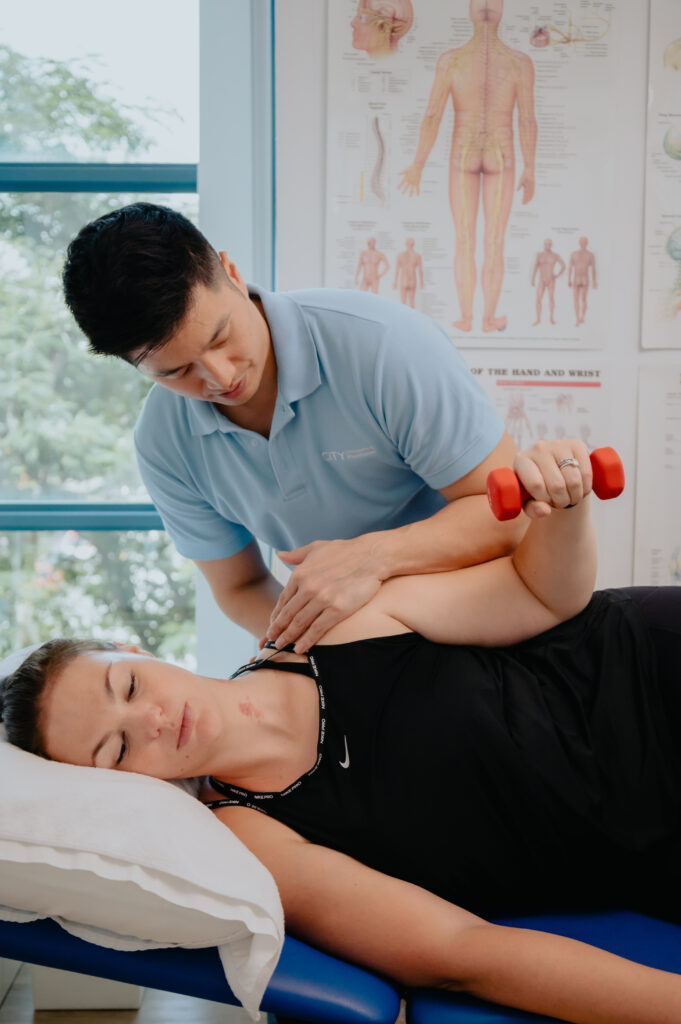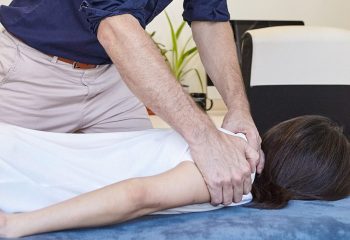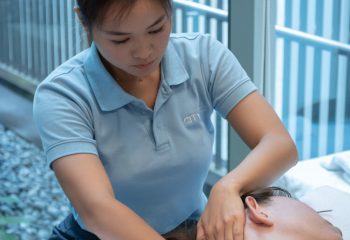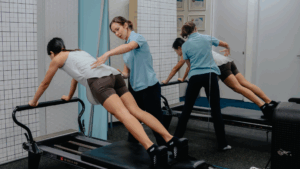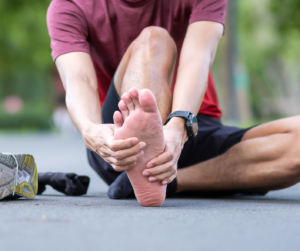Are you tired of living with pain and discomfort but unsure of what to do? Do you want to improve your range of motion and get back to the activities you love? You may have considered seeking conventional medications or even surgery – but have you thought about physical therapy as an option?
In Singapore, it is a highly effective and widely accessible way to treat a range of conditions and injuries. With various treatment methods and exercises available, physical therapy can help you reduce pain, improve mobility, and boost your overall physical health.
If you’re curious about physical therapy and what it can do for you, we’ve got you covered! . In this article, we’re going deep into everything you need to know about physical therapy in Singapore, including how it works, its benefits, and the different types of treatment methods used.
So, whether you’re recovering from an injury or simply looking to improve your physical health, read on to take the first step towards enabling your best everyday.
What is Physical Therapy?
Before jumping into how physical therapy works, let’s first understand what exactly it is.
Physical therapy is a journey to improved mobility and is a vital form of rehabilitation – utilising various exercises and techniques, therapists help their patients get back on their feet (literally) with increased strength and flexibility.
Through tailored treatments, physical therapists work diligently towards helping each patient reach peak performance!
Physical therapy is effective in treating various conditions, such as:
- Chronic Pains & aches
- Fatigue
- Limited flexibility & mobility
- Injuries
- Disabilities
Physical therapy has been around for centuries, and its roots can be traced back to ancient Greece, where massage, exercise, and hydrotherapy were used to treat injuries and illnesses.
Over time, it has evolved to include a wide range of treatment options tailored to meet each patient’s specific needs.
Physical therapy is different from other forms of therapy in that it focuses on the musculoskeletal system, which includes:
- Muscles
- Bones
- Joints
- Soft Tissues
It works to identify the root cause of a patient’s problem and develop a treatment plan that targets that specific area.
What’s the difference between physical therapy and physiotherapy?
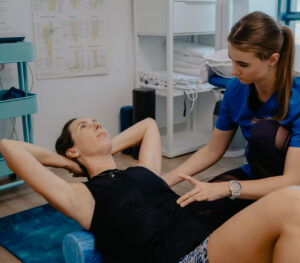
Physiotherapy is a medically-focused and technology-driven form of physical therapy, practised differently around the world. In North America, physiotherapy is commonly referred to as physical therapy, while in Europe “physiotherapists” and “physical therapists” are two distinct roles.
In Singapore, the terms physical therapy and physiotherapy are often treated as synonymous, where both may be used interchangeably.
Despite the small differences in naming conventions throughout different countries, physiotherapy and physical therapy both provide similar approaches to diagnosis, prevention and treatment of various issues or diseases related to movement dysfunction.
They are both integral parts of maintaining good health, and they can be used in conjunction with other modalities and services, such as osteopathy and massage therapy, to provide the best possible outcome.
How Does Physical Therapy Work?
Physical therapy works by identifying and addressing the underlying causes of a patient’s condition. Here, at City Osteopathy & Physiotherapy, our physical therapists will assess your condition, which may involve the following:
- An extensive physical examination
- A full review of your medical history
- A comprehensive consultation to discuss your symptoms
Once the assessment is complete, our physical therapists will develop a personalised treatment plan for you based on the identified root causes.. This plan may include various treatment options such as exercises, manual therapy, and other techniques.
Beyond in-clinic treatments, we are also dedicated to patient education, where you will be taught techniques to manage your condition and prevent further injury. Follow-up care is also an essential part of this therapy, where we make sure that we are there with you at every step of the healing journey, monitoring to ensure you are progressing well and your condition is improving.
What are the Benefits of Physical Therapy?
For years now, physical therapists have provided crucial support for their patients – helping them to reduce the severity of their condition and improve their overall quality of life. With this in mind, let’s take a look at just what kind of benefits there are when it comes to taking advantage of professional physical therapy services:
1. Physical therapy for effective pain management
Physical therapy can help reduce pain caused by injuries or chronic conditions. A physical therapist may use massage, hot and cold therapy, and stretching to alleviate pain. For example, exercise is often prescribed to help strengthen surrounding muscles and improve flexibility, which can reduce pain and stiffness.
2. Physical therapy to improve mobility
The second benefit of physical therapy is improved mobility. This is done through strengthening muscles, improving the range of motion, and increasing flexibility. This is especially crucial for individuals recovering from injuries or surgeries.
3. Physical therapy to prevent the need for surgery
One of the most significant benefits of physical therapy is helping patients avoid surgery or prevent the need for it. In some cases, it is also used as an alternative to surgery. Even if the surgery is necessary, physical therapists can help prepare the patients for the procedure and aid in recovery and rehabilitation after surgery.
Find out more about our treatment options for our preoperative and postoperative patients.
4. Physical therapy to manage chronic conditions
Physical therapy isn’t just for sore muscles and stiff joints – it can be a powerful ally in managing chronic conditions like diabetes, arthritis, and heart disease.
Physical therapy can help by improving mobility and increasing strength, which are two crucial factors that can lead to better management of chronic illnesses. Exercise is often prescribed as regular physical activity can aid in improving blood glucose control for those with diabetes, reducing inflammation and joint pain associated with arthritis, and decreasing the risk of heart disease.
Manual therapy can also be used to increase range of motion in joints affected by arthritis or to help reduce pain. Therapeutic modalities such as heat and cold can be used to decrease muscle spasms or inflammation associated with arthritis. Lastly, lifestyle modification may involve helping a patient develop a better understanding of their condition, providing them with nutritional education, and helping them establish healthier habits that will promote long-term health goals.
5. Physical therapy to improve overall health and wellness
As physical therapy takes on a holistic approach and takes into account the whole body in diagnosing, treatments allow for improved overall health and wellness. Promoting physical activity, reducing pain, and improving mobility and balance ultimately results in better performance, throughout your daily life. .
Our dedication to patient education also means that you will be able to maintain these benefits and prevent future injuries.
6. Physical therapy at City Osteopathy & Physiotherapy is curated and customised
Physical therapy treatment plans are customised to the individual patient’s needs, goals, and abilities. It means that patients receive personalised care and attention, which can lead to more effective outcomes and faster recovery times.
Customised treatment plans can make physical therapy even more effective and accurate. By tailoring a plan specifically to each person’s needs, physical therapists are able to provide the best possible outcomes. Customised plans also allow physical therapists to address any underlying problems that may be causing a patient’s condition. For example, if someone is suffering from chronic arthritis, physical therapists can look for signs of weakness or imbalance that may be contributing to the patient’s condition.
Types of treatment methods used in physical therapy
Physical therapy involves various treatment methods designed to address specific conditions and goals. Here are some of our most common treatment methods:
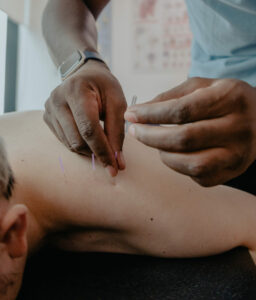
1. Dry needling in physical therapy
Dry needling is a technique that uses small, thin needles to stimulate trigger points, or areas of muscle tension and knots, to relieve pain and improve mobility. The needles are inserted into the skin and muscle tissue and may be manipulated to release tension and improve blood flow.
This method is often used to treat musculoskeletal pain and injuries like back pain, neck pain, and tendinitis.
 2. Ultrasound therapy in physical therapy
2. Ultrasound therapy in physical therapy
Ultrasound therapy is a treatment method that uses high-frequency sound waves to promote healing and reduce pain and inflammation. The sound waves are delivered through a handheld device and penetrate the skin and muscle tissue.
Ultrasound therapy can help increase blood flow and stimulate tissue repair, making it helpful in treating soft tissue injuries, such as sprains and strains. It can also be used to treat conditions like arthritis and tendonitis.
Common Conditions that Physical Therapy Treat
Doubtlessly, many individuals experience physical pain and discomfort due to various conditions. Fortunately, physical therapy can be an effective and non-invasive treatment option for many of these conditions.
Through targeted exercises, manual therapy, and education, physical therapists can help individuals regain mobility, reduce pain, and improve overall function. Here are some of the common conditions that physiotherapy can help treat:
1. Achilles tendonitis treatment with physical therapy
Achilles tendonitis is a common condition that affects the Achilles tendon, which is the largest and strongest tendon in the body. This condition occurs when the tendon becomes inflamed or irritated due to either overuse or sudden, intense activity. The main symptom of Achilles tendonitis is pain and tenderness in the ankle area near where the Achilles tendon attaches to the heel bone.
Physical therapy can help alleviate this pain and reduce inflammation. Exercises such as stretching, strengthening, and range of motion activities can be used to treat Achilles tendonitis. Additionally, physical therapists may recommend modalities such as ultrasound or heat/cold therapy to reduce pain and swelling.
In addition, physical therapists can work with you to develop a personalised exercise program that focuses on improving flexibility, strengthening the calf muscles, and correcting any biomechanical issues contributing to the condition.
2. Lower back pain treatment with physical therapy
Lower back pain is a very common condition with many potential causes. One of the most frequent causes is poor posture and weak core muscles. When the core muscles, including the abdominal muscles and lower back muscles, are weak, they cannot support and stabilise the spine. This can lead to excessive strain on the spine, leading to pain. Other common causes of lower back pain include injury, poor posture, disc herniation and arthritis.
Physical therapies for lower back pain can involve manual therapy techniques like:
- Spinal Manipulation
- Therapeutic Exercises – These exercises focus on strengthening core muscles, increasing flexibility, and correcting posture.
- Shockwave or ultrasound therapy
Physical therapists work with patients to develop a personalised exercise program that focuses on strengthening the lower back muscles, improving flexibility, and correcting any underlying biomechanical issues contributing to the pain.
3. Bursitis treatment with physical therapy
Bursitis is a painful condition that affects the bursae, which are small, fluid-filled sacs located near joints throughout the body. These sacs act as cushions to protect tendons, ligaments, and muscles from friction due to movement. Bursitis occurs when these sacs become inflamed due to overuse or injury. Symptoms may include pain, swelling, redness, and heat in the affected area.
Physiotherapy reduces the pain associated with Bursitis by using a range of modalities, such as:
- Stretches
- Strengthening exercises
- Hot & Cold Therapy
All these treatment modalities promote healing and reduce inflammation.
Physical therapists also use manual techniques like massage or joint mobilisation to help reduce pain and stiffness in the affected area.
4. Hip pain treatment with physical therapy
Hip pain can be caused by a variety of elements, from arthritis to muscle strain and even injury.
Physical techniques like therapeutic exercises can help in the following ways to relieve hip pain:
- By strengthening hip muscles
- By improving flexibility
- By correcting gait and posture
That is why physical therapy is a recommended and effective treatment option for those suffering from hip pain. With the main goal of physical therapy being to reduce inflammation and pain while improving mobility and function, it is no wonder why physical therapy is a recommended and effective treatment option for hip pain
Why is Physical Therapy Important?

Physical therapy is an important component of the recovery process for many people, from pains and aches to postoperative recovery. Physical therapists can evaluate a patient’s condition, create an individualised treatment plan to address their specific needs, and help them return to activities with minimal pain.
It is essential for many reasons such as:
- A non-invasive and drug-free solution to physical conditions
- Help individuals avoid surgery or long-term medication use
Physical therapy also gives individuals the tools to manage their conditions and prevent future complications. Additionally, it can improve overall health and well-being by reducing stress, improving sleep, and boosting energy levels.
Unmatched Expertise and Compassionate Care with City Osteopathy & Physiotherapy
Regardless of your age, physical therapy is a remarkable way to help you avoid, prevent and even treat several muscle-related issues. Here at City Osteopathy & Physiotherapy, we take pride in our knowledgeable and experienced team of professionals who are dedicated to their craft.
Our holistic approach stems from having practitioners come from various backgrounds, professions, life experiences and training. We foster a collaborative community, which means that every practitioner learns from each other, becoming increasingly equipped with the most effective treatments for every condition.
And with our common passion for enabling every individual to live their best everyday, our osteopaths, physiotherapists, manual therapists, and sports massage therapists are always ready to help you.
So book your initial consultation today and take the first step towards a pain-free life with City Osteopathy and Physiotherapy.

